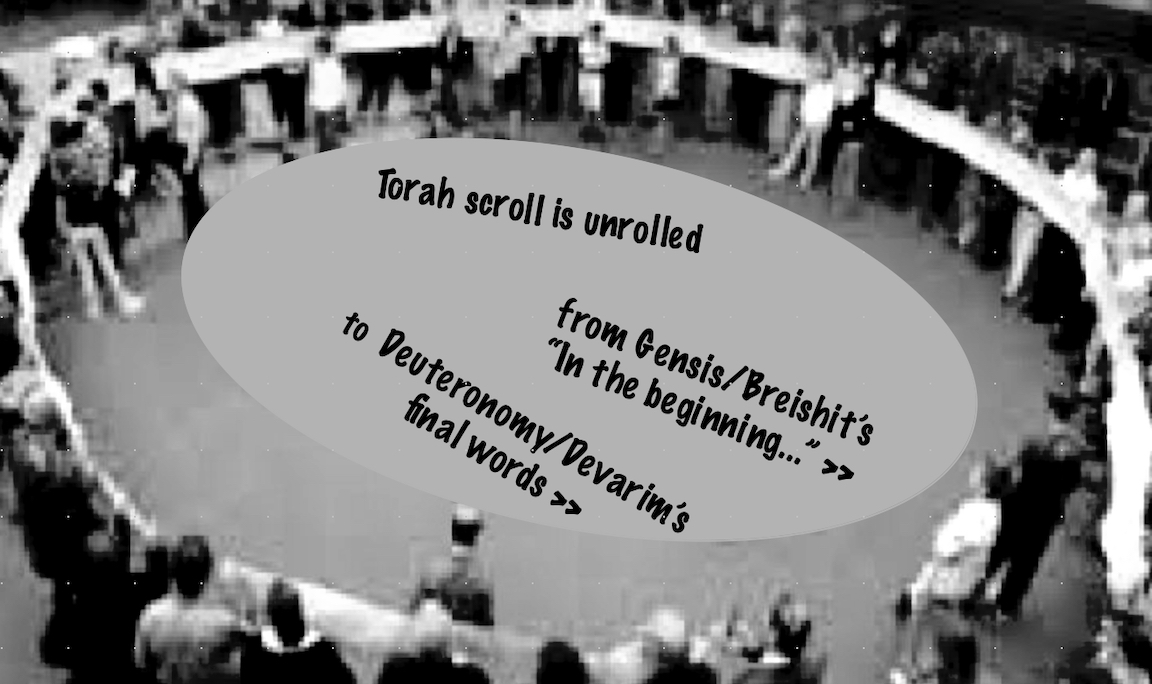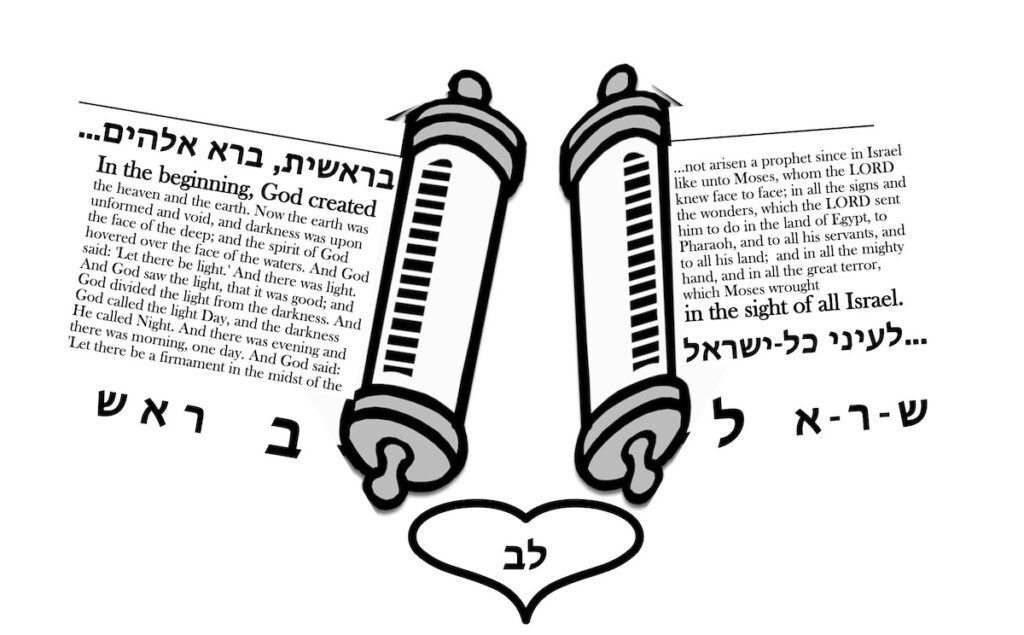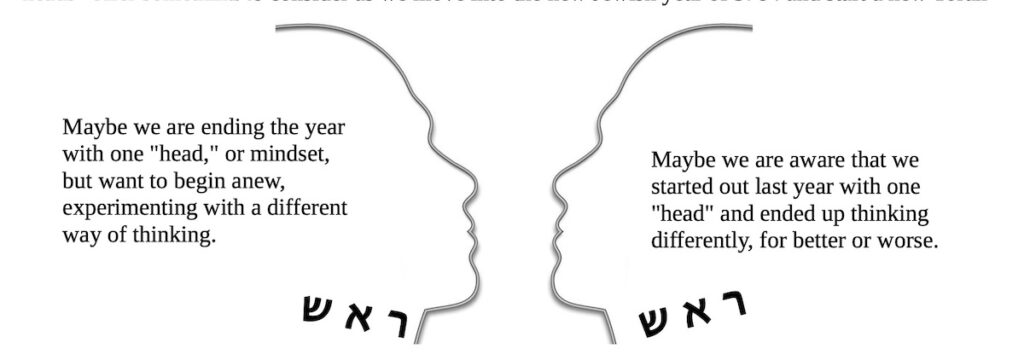This Divrei Matir Asurim is part of a continuing experiment in sharing General Meeting and Team news with inside members and share inside members’ thoughts with outside members. This material is available in three formats: straight text for copying into emails; formatted text for copying/printing for postal mail; and on-line in hypertext (with some internet links for those who can access them; below).
Cheshvan 5784 COMPLETE STRAIGHT TEXT Divrei Matir Asurim (for easier copying to email)
Cheshvan 5784 COMPLETE FORMATTED Divrei Matir Asurim (formatted for printing or reading on-line)
Divrei Matir Asurim is divided into two sections this month, to make it easier to share one section, and not the whole, with penpals or others who might be interested.
Inside readers, please send responses to news shared here, additional thoughts on MA operations, or Torah Explorations: through outside MA pen pal, if you have one; through USPS mail directly to: Matir Asurim, PO Box 18858. Philadelphia, PA 19119; or by emailing matirasurimnetwork@gmail.com.
MEETING AND OPERATIONS
Recent General Meeting News
There was no general meeting on September 13 or September 27. The meeting on October 11 focused on catching up on Team news and looking at capacity for future work. We also briefly touched on how to support one another, and continue the work, in this difficult time.
Penpal:
Twelve people in San Francisco Bay area attended a training and were matched with penpals at San Quentin. A letter-writing event in Seattle sent out 30 letters.
Membership and Wellness:
Historically, a long-term member and met one-on-one with newer members. At this point, however, there are about 20 new people on the list. So, a group new member meeting is proposed. The “Membership 201,” meeting, previously scheduled for November 8, is postponed until after the new member meeting.
“Hubs” of local members are forming in the San Fransisco Bay Area, Seattle, and Baltimore. In Seattle, connections were made with a local facility, and ten men in Twin Rivers are being paired with members of the Kavana Cooperative, an independent Jewish community. Following the Rosh Hashanah card writing, there are plans to do a Chanukah event.
There is a plan to check in with outside members now on the “Core list” to see whether they are still interested in being part of the organizing group.
Finance and Fundraising:
Plans to start a mutual aid fund for inside members are in the very early stages. This will be revisited after new member on-boarding, to get more input.
Individual support:
Inside members are receiving professional training and Jewish education tutoring with help from Matir Asurim.
Communications:
This relatively new team meets monthly and is still working on dividing work — newsletter, additional writing, social media, and website.
Resources:
High holidays and Sukkot materials were combined into one resource packet. These were mailed to facilities but not yet shared on website. The latter is in the works. Now that there are years worth of holiday materials, the team is considering a move to less time-sensitive resources. Topics being considered are prayer, grief, self-care, Jewish values, and Jewish adornment (kippah, tzitzit, tefillin…).
NEXT MEETINGS: October 25 and November 8.
——- Memorial, Healing and Special Concern, Celebration ——-
Yahrzeits:
10/17/2008. Levi Stubbs [Stubbles], baritone singer, The Four Tops
10/18/1995. Ada Lois Sipuel Fisher, US lawyer and civil rights activist
10/21/1970. John T. Scopes. US educator, convicted of teaching about evolution
10/29/1986. Abel Meeropol, US Jewish poet and songwriter, author of anti-lynching “Strange Fruit”
11/4/2006. Frank Calder, Canadian leader (British Columbia’s first indigenous cabinet minister) who fought for tribal land claims
Recent Losses:
September 21. Anthony Sanchez, executed in Oklahoma
October 3. Michael Zack, executed in Florida
October 10. Jedidiah Murphy. executed in Texas
Executions Scheduled:
October 26: William T. Speer, Texas
November 2: Thomas Creech, Idaho
November 9: Brent Brewer, Texas
November 16: David Renteria, Texas
November 30: Philip Hancock, Oklahoma
Healing and Special Concern: All lacking community. All suffering from violence in any of its many forms, including Israeli-Hamas war, and all who grieve for that and other conflicts. All who seek healing of spirit; those needing medical attention and healing of body.
Celebration: Matir Asurim members nurturing new life and new relationships.
Share your prayer concerns, celebrations, and memorials for future editions. Submit through an outside penpal, email ethreporter@gmail.com, or mail to Matir Asurim, PO Box 18858. Philadelphia, PA 19119
——- —————————- ——-
COMMUNITY NOTE — JEWISH CURRENTS writes:
Help us spread the word: Jewish Currents offers a free subscription to anyone who is incarcerated in the US. We currently have over 75 incarcerated subscribers. Those readers have signed up through word-of-mouth or been connected to us through community organizers. Some of the most meaningful letters we receive are from incarcerated readers telling us how much our work means to them.
In addition to providing the magazine free-of-charge to all incarcerated readers that request it, we are proud to platform the work of those writing and working from inside America’s prisons.
If you or a loved one is incarcerated and would like to receive Jewish Currents, email subscriptions@jewishcurrents.org, with the recipient’s name and address. Or contact Jewish Currents, PO Box 130049, Brooklyn NY, 11213.
TORAH EXPLORATIONS: A new start?
This month’s Torah Explorations from V. Spatz
We are a month into the new Jewish year of 5784. Since Rosh Hashanah, the United States executed three men: Antonio Sanchez (9/21 in Oklahoma), Michael Zack (10/3 in Florida), and Jedidiah Murphy (10/10 in Texas). We lost others to gun violence, conditions of incarceration, and so many other avoidable disasters. Around the world, natural disasters continue. Fighting, too. War now rages in Israel and Palestine, where thousands are already dead and more than 120,000 displaced….Doesn’t feel much like a new start.
The same is true, though, of the annual Torah reading cycle. And that suggests that we are part of a very old story.
With the new year comes the beginning of a new Torah cycle. Long ago, Jewish tradition divided the Torah into 54 portions for public reading and study each week. The first portion, “Breishit,” starts with “In the beginning…” and continues through “But Noah found grace in the eyes of YHVH” (Gen 1:1-6:8).
The early verses of Genesis describe Creation and the Garden of Eden. The imagery is beautiful and peaceful:
- divine spirit hovering, and creation of light and a new day (Gen 1:1-2);
- rest and holiness of Shabbat (Gen 2:1-3);
- a garden with “every tree that is pleasant to perceive,” and a river watering Eden (Gen 2:9-10).
This seems like a promising fresh start… perfect for a new year.
But it doesn’t last long.
The Garden of Eden is home to humans for only 40 verses (Gen 2:8 – 3:22). Before the first weekly Torah portion ends, brief good is replaced with bad and then worse:
- Adam and Eve are cast out of Eden (Gen 3:22-24);
- Cain kills Abel (Gen 4:8);
- Cain is exiled (Gen 4:16); and
- God regrets Creation and decides to destroy everything (Gen 6:5-7).
….Doesn’t feel much like a new start.
It is tempting to wish the first portion stopped earlier: Couldn’t we have one calm, happy reading? Is the Torah suggesting that all fresh starts are doomed to failure? That’s a discouraging thought.
But, what could we learn from a story stuck in Eden? Can we see ourselves reflected in a life without trouble? Maybe this ancient story arc is telling us that things have always been tough, that people have always struggled in the midst of conflict and disaster. In this Torah portion, even God makes and admits mistakes…. and then takes steps that lead to more trouble…. Isn’t that more like the life we know?
The portion Breishit ends with the introduction of Noah. His name comes from a root that means “to give comfort” or “to rest.” Maybe the Torah portion is asking us to pause, take a breath, and look back to see where we might learn. Maybe we can find comfort in knowing that, bad as things may seem, the human struggle is very old, and we and God are in this story together.
The First Human Interactions
One lesson comes from Rabbi Stacy Rigler, Executive Director of the Association of Reform Jewish Educators. Here is a part of what she wrote about this portion:
“…When human beings were formed, the first response of one person to another was admiration: “This one at last is bone of my bones and flesh of my flesh.” (Genesis 2:23) One human recognized the humanity of the other and immediately felt a sense of comfort and relief.
“The second response of the two creatures is a desire to share in something delightful:
When the woman saw that the tree was good for eating and a delight to the eyes, and that the tree was desirable as a source of wisdom, she took of its fruit and ate. She also gave some to her husband, and he ate. (Genesis 3:6)
“…But, in the third interaction between these humans, fear and doubt changes the dynamics. God asks the humans about their location and if they ate from the tree of Good and Evil: “The man said, the woman You put at my side-she gave me of the tree, and I ate” (Genesis 3:2).
“After three interactions, the first human being turned against the other….When Adam and Eve no longer worked together, God banished them from the Garden of Eden.” — from “God Sent You” by R’ Stacy Rigler, Association of Reform Jewish Educators
Rabbi Rigler notes that people often react badly when scared and threatened. But we don’t have to repeat the pattern. She hopes we can draw a lesson from Breishit “and look at moments gone wrong as opportunities for conversation and reflection.” (Full dvar Torah is available on URJ website.)
We can look at the story of Cain and Abel and try to figure out how things went so wrong. Where can we draw lessons for ourselves and our communities?
We can also look at the wider lessons of this time of year in Jewish tradition.
Beginnings, Ends, and Circles
Jewish tradition makes a big point of marking beginnings and endings. For example:
- There are blessings for before eating and blessings for the end of a meal or snack.
- Blessings mark the start of Shabbat and holidays, and others mark the return to ordinary when the holy days are over.
- There is a blessing to begin Torah reading or study, and a blessing to mark the end of a reading or study session.
- The holiday of Simchat Torah (literally “Joy of Torah”) marks the end AND the beginning of the annual Torah reading cycle.
Judaism also loves circles:
- Bread for the new year is often round.
- Circular hand motions can be part of candle-lighting blessing.
- Some burial and memorial traditions include circular paths.
- Circling is part of Jewish wedding ceremonies.
- Circling is part of rituals on Sukkot and Simchat Torah.
Simchat Torah includes both aspects of Judaism: marking an end and a beginning — sometimes creating a large circle from the unrolled scroll — and circling with (rolled, wrapped) Torah scrolls during prayers.
The regular weekly schedule of public readings ends with the 53rd Torah portion. The 54th, and final, is saved for Simchat Torah. The festival marks the end of the year-long Torah cycle by reading the final words of the Torah. Instead of stopping there, though, Devarim 34:12 is followed, almost immediately, by “In the beginning…” (Breishit 1:1).
Some communities read from the end of Devarim on one scroll, and then read from Breishit on another. Some communities unroll an entire scroll, read the end and then the beginning, and then re-roll. This might be a necessity, if there is only one scroll. The unrolling practice also offers a chance to see the whole text at one time and helps the community experience the circularity of Simchat Torah. (Photos below.)
Rolling On…
Many reasons are given for separating the final Torah portion, V’zot HaBerachah[this is the blessing], from the other 53 weekly readings. In thinking about new starts, the practice reminds us that every new roll of the scroll, every new year’s beginning is closely tied to what came before. This is a lesson about looking back: We must be aware of how history and past harm influence the present and future. We have to reflect and explore healing, if we hope for better in the new cycle. It’s also a lesson about rolling onward: No matter how difficult some of the past may be, Simchat Torah warns us not to stop there. We mark the end of one cycle, pause to celebrate how far we’ve come. And then we try again.
…and Binding
Following major Jewish festivals — Shavuot, Passover, and Sukkot — there is a day called “isru chag.” The Hebrew means “bind (isru) the festival (chag).”
Ancient teachings relate the “binding” to two rituals: 1) an extra sacrifice brought to the Temple after the holiday and bound to the altar, and 2) plants of the “lulav,” that are bound and together and shaken on Sukkot. Later teachings focus on doing something extra, like having one more festival meal, in the spirit of the holiday.
Dan Brosgol wrote in Jewish Boston about isru chag as a day to recover from the holidays: “An extra day of eating and drinking…AND not going to work and school.”
This year, isru chag for Sukkot(10/9) was a day many Jews were first learning about, or still trying to grasp, what became all-out war in Israel and Palestine.
By the time you read this Cheshvan edition of Divrei Matir Asurim, the new year and the festival days will be over. They might seem quite distant. The formal reading of Breishit (on October 14)will have passed, as well. But we can still “bind” lessons from the holidays and from earlier Torah readings into our lives. We can try to hold onto some of our hopes and prayers for a new year. We can bring them forward with us, knowing that — as in that first Torah portion — people have always struggled amid conflict and disaster… and Jewish tradition urges us to pause, reflect, and roll on.

![A community circle holds a Torah scroll, unfurled for Simchat Torah, and a reader, holding a ritual yod [hand-shaped pointer], reads from the end.](https://matirasurim.org/wp-content/uploads/2023/10/scroll-circle-reading.jpg)
Photo 1: Individuals stand in a large circle, together holding an unfurled Torah scroll. (photo borrowed from Jewish Boston (MA), 2016). Added text points to Breishit and Devarim on the scroll. Photo 2: another community circle holds a Torah scroll, and a reader, holding a ritual yod [hand-shaped pointer], reads from the end. (photo cropped from Kenosha (WI) News, 2017)
TORAH EXPLORATIONS: Head and Heart

The last word of the Torah is “Yisrael [the people of Exodus tale].” The last letter is lamed [ל].
The first word of the Torah is “Breishit, [in the beginning].” The first letter is bet [ב].
Together lamed-bet spells lev = heart. Many teachings are offered from this. Here are a few:
- The heart of the Torah is the people relating to the tale and trying to live its words.
- The heart of Torah is the “white space” between the words, our interpretations in every age.
- We cannot spell “lev” without starting over, learning again and again.
The 2nd-4th letters of the Torah are reish-alef-shin — “rosh.” The Hebrew word “rosh” means both “head” and “beginning.” These same three letters appear in “Yisrael” at the end of the Torah, These two “heads” offer something to consider as we move into the new Jewish year of 5784 and start a new Torah reading cycle.

Maybe we are ending the year with one “head,” or mindset, but want to begin anew, experimenting with a different way of thinking.
Maybe we are aware that we started out last year with one “head” and ended up thinking differently, for better or worse.
Where are your heart and head taking you this new year?
This month’s Torah Explorations from V. Spatz. Share your own or recommend something you’ve read. Contact editor.
Alt Text for two images that accompany “Head and Heart” Torah Exploration.
1) two open scrolls, one (left) shows the beginning of the Torah, “Breishit bara elohim / In the beginning, God created,” with the first letter, bet, highlighted and the letters reish-aleph-shin — the word “rosh”; the other (right) shows the end of the Torah, “l’einei kol yisrael / in the sight of all Israel,” with the last letter, lamed, highlighted and the letters sin-reish-aleph — the same letters in “rosh.” Below this, is a heart with the letters lamed-bet.
2) outline of two facing heads with text: “Maybe we are ending the year with one “head,” or mindset, but want to begin anew, experimenting with a different way of thinking.” and “Maybe we are aware that we started out last year with one “head” and ended up thinking differently, for better or worse.”
Share Your Creativity and Questions
Matir Asurim welcomes visual arts and writing, reflections on Jewish prayer and practice, words of Torah, and other thoughts on MA’s workforDivrei Matir Asurim and resources packages.
Questions. Do friends/family/loved ones have a question about Jewish practice while incarcerated? Send questions and we’ll answer in a future resource mailing. Topics might range from the meaning of a specific prayer to how to bring in the holiday when you can’t light candles, and anything in between.
Contact Matir Asurim. PO Box 18858, Philadelphia, PA 19119. matirasurimnetwork@gmail.com
Divrei Matir Asurim is a publication to promote religious education and solidarity among members and all interested.
If not otherwise noted, content is provided by V. Spatz, an outside member of Matir Asurim. As this experiment continues, look for words from other members…. and please consider sharing your own.
